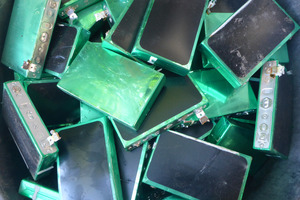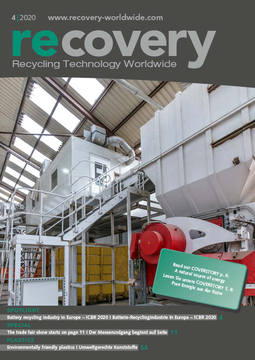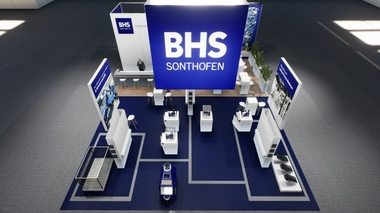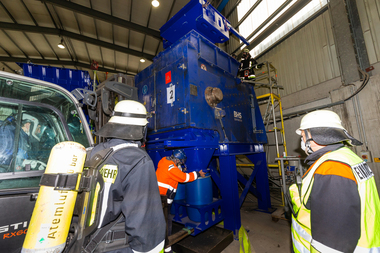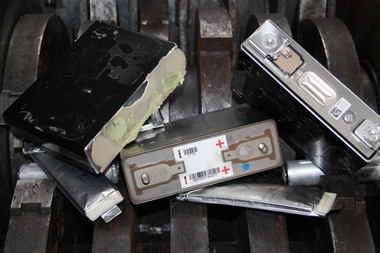Efficient and safe recycling of lithium-ion batteries and accumulators
Safe process for battery recycling
Before the batteries can be shredded safely, they first need to be discharged. Following this, a BHS shredder selected according to the feed material (cells or battery modules) is used in the first shredding stage. If the batteries have not been treated with a thermal process at high temperatures, sparks in the machine can cause the electrolyte to catch fire. In order to eliminate this risk, a customized shredder that has been made gas tight and that operates in a nitrogen atmosphere is used.
Once the shredding tools have reduced the feed material to the desired target size, the parts fall through appropriately designed grid segments. The shredded batteries are heated in batches in a vacuum dryer from AVA located directly downstream to evaporate the electrolyte components for subsequent recovery in a condensation unit. The electrolyte-free residues are then subjected to dry mechanical processing consisting of various screening, separating and ball-shaping steps.
The system size, which can be adjusted depending on customer requirements, ranges from 100 kg to several tons. “The process delivers the following three end products: high-grade aluminum concentrates, copper concentrates and black mass, which contains lithium and various other metals such as manganese, cobalt and nickel. All three fractions are ready for remarketing,” explains Christian Kühn, Sales Director for Recycling & Environmental Technology at BHS. “Another advantage for many of our customers is that the products of the small plant do not fall under ADR regulations during transport.”

